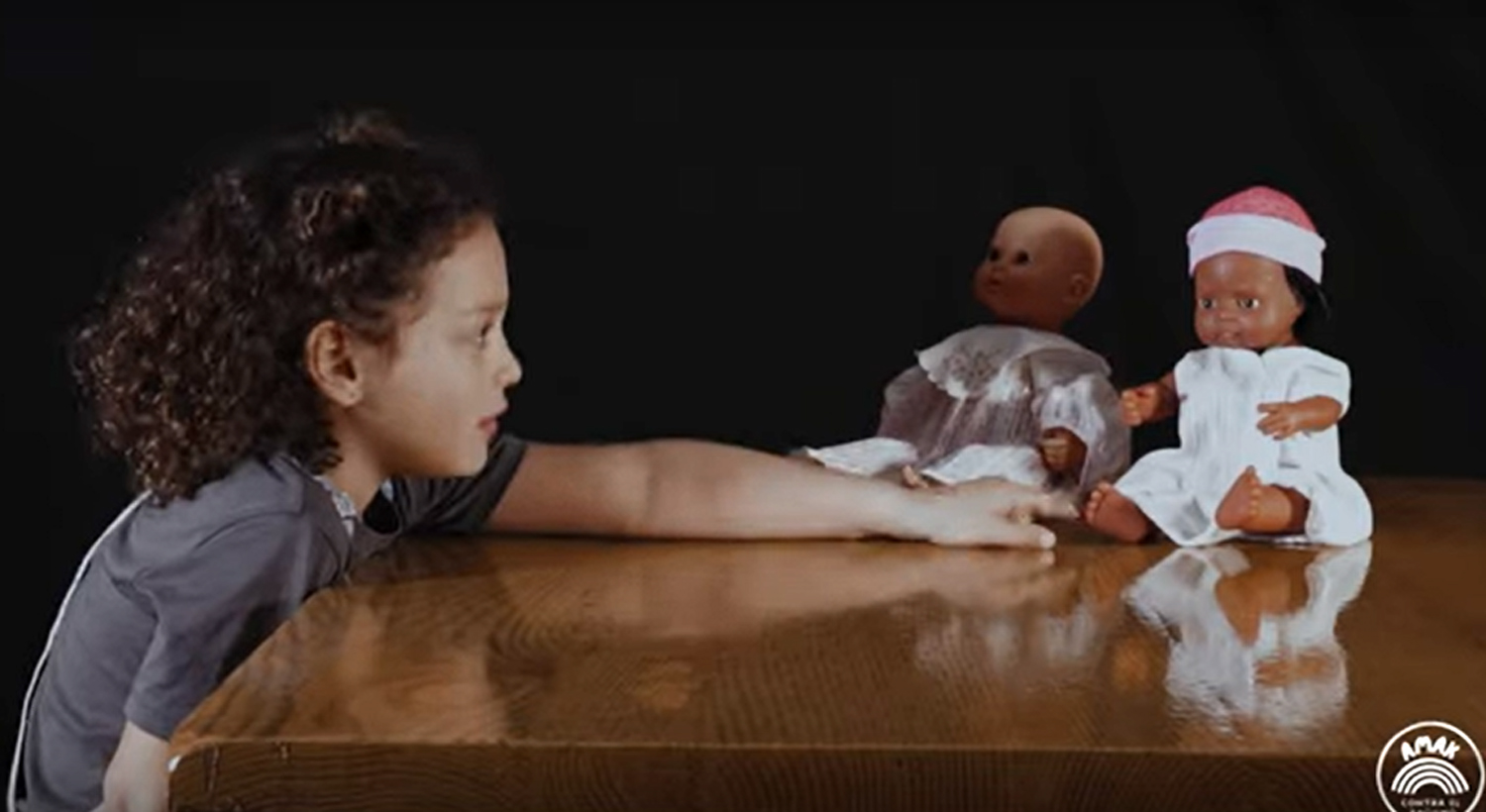The black doll is evil and scary, the white doll is faster and will get better work in the eyes of children 7-8 years old
- In a college in Euskal Herria they repeated the experiment a century ago, with the white doll and the black doll in front of the children 7-8 years old, and the results have made it clear that the white has attributed positive characteristics to the black negative (video below). “Children are certainly not racist, if racism is to think that another person is less, but in practice their comments, jokes, exclusions… have a racist tone, and if these attitudes are not worked, then they will become racist people.”

The Chinese, our people’s, the fastest of the two dolls, who can be a doctor in adulthood, with better work and better house of the two (“what do more work and perhaps earn more money”), children 7-8 years old say in video. Black, on the contrary, is bad (“I see a little weird”), the most liar in both, the most frightened of it, the one who seems poor (“because in Africa I saw that the brunettes were poor”), the external (“In Euskal Herria there are not many”), the one who will be a cleaner in adulthood (“because it looks like a cleaner”).
The video also shows a black guy whose answers go along the line above. When you ask which wrist looks more like itself, you identify with the black doll, but it's more white. Why? He thought a lot… “Because it’s cool.” The boy also says that black is foreign and not local, from Euskal Herria.
A group of parents, especially mothers, called mothers against racism, have carried out the experiment with the aim of socializing reflection. They have not seen the need to mention the school in order, among other things, to prevent racism from being associated with a particular school and to indicate that those appearing in the video are a reflection of any school, family and child. We talked to Estefanía Quilez, the group's father:
It's been almost 100 years since the design of the experiment. Since then, our society is more multicultural, racism has been worked on in schools... Have you been surprised by the children's answers? Did you expect such predictable results?
Before, the parents went to school to give racism workshops, and we heard hard testimonies, then we were surprised; the video we made in the workshops to endorse what we have seen and heard and to make the reflection known, so as it was a video derived from a process, we expected those answers. On the other hand, we understand that boys and girls are part of society and as they become socialized they internalize their structural oppositions and discourses. Children are surely not racist, if racism is to think that another person is less or has less humanity, but in practice their comments, jokes, exclusions… have a racist tone, and if these attitudes are not worked, then they will become racist people.
The reality is that the school in general does not work properly, among other things because teachers do not have sufficient resources and workload, and the rest also have a lot of responsibility: families, of course, media, etc. We value ourselves as parents who work with children, and our children are the ones who have given these answers, think of families and environments that have not worked on the subject.
"Some black children, raised in a very safe environment, have not realized that they are black (they know the color of the skin, but not the oppression it entails), for example up to 14 years, when they change the context and move to another school or village"
The result is very clear: they relate white to good, black to bad. Are the messages we receive from different places so marked?
Music, TV, video games, street… The messages are many, and the more adult the child, the more will socialize outside school and family support, more messages (or more and more messages that have no answer, no explanation, etc. ).
The age of children participating in the video is 7-8 years. Have you studied at what age “we become racists”?
The adolescent may be racist, in the ESO we also hear racist comments, we are gradually coming down and we have heard those attitudes at 7-8 years… How long can we go down? In view of this, the demonstration is frightening. Could the 5-year-old experiment have other results? I don't know, maybe the answers are more conditioned on the aesthetics, clothing and other characteristics that each doll carries, and not on racism. But I wouldn't know, for example, they start to differentiate gender from very young.
There are cases, black children, who have been educated in a very safe environment, who have not realized that they are black (I mean conceptually, they know what the color of the skin is, but not how society sees it as black and what oppression it has), for example, until they change the context and move to another school or town.
"Psychologically, it's very hard for a black child to respond and then go home and look in the mirror."
Precisely, the answers of the black child focus on that it resembles the black doll, which is the one who least likes and which applies all the negative characteristics to the black doll. What influence does it have on their self-perception and identity under construction?
Psychologically, it's very hard for a child to respond and then go home and look in the mirror. And while they're young, well, even if you hear some comment because there's always parents, teachers, but problems start in preadolescence, especially when you realize that you can never be that ideal. We have to talk about racism, because there is pain, a lot of pain, especially in children, because they have more resources, and it is the responsibility of the whole of society.
What others would you highlight in the answers and reactions of the children?
Why have you assumed that the white doll is doing well economically, that he's going to be a doctor, that he's going wrong to black, that he's going to be a cleaner? The class category is being fully assimilated and is very significant because children add class to the racial category.
How can we turn all these prejudices and stereotypes around?
Working, working and working, always with the alarm on: “You’re going like a gypsy, dress up well,” “it looks Chinese, it works so hard.” The phrases are thrown too easily, because language is racism at the tip, and the first step is to be aware of it. It's a process, a process of becoming aware of what I'm doing with my attitudes, and it's not going to be a short process, but you have to do it slowly. We've been with colonialism for 500 years, and there's the origin of racism, so it will take several generations to turn it around.

.jpg)
Asmatuz gero, ziur asko, eraginkorragoa da keinu bat, hitz bat baino. Zenbat bider esan eta ezeztatu dugu mila hitzek irudi batek baino gehiago balio dutela. Barkatu, alderantziz da. Ez da bakoitzak zenbat balio duen, da zertarako. Zerbait ulertzen burua bihurritu nahi... [+]
Cimade elkarteak emandako datuen arabera, %55a aske geratu bazen ere, 2023an 351 pertsona atxilotu zituzten paperik gabekoak atxikitzeko zentroan. Gehienak Aljeria, Maroko eta Tunisiako jatorria zuten.
Apirilaren 18an, Mbolo Moye Doole elkarteak elkarretaratzea deitu zuen, Bilboko manteroen aurkako arrazakeria eta indarkeria poliziala salatzeko.
Hainbat herritarri suzko arma batekin tiro egin ostean bi pertsona zauritu zituzten udaltzainek, horietako bat larri, pasa den martxoaren 21ean, Barakaldon. Tirokatuak kalean bizi ziren magrebtar jatorrikoak izatea ez dela kasualitatea dio 77 elkartek sinaturiko adierazpenak:... [+]











